
Displaced Representation and Nationalistic
Appropriation: Illustrating the Atlantic
Cable of 1858
- Mark Niemeyer
_______________________________
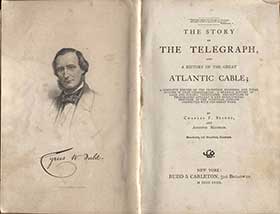
Fig. 1. Ch. F. Briggs and A. Maverick, The Story of
the Telegraph, 1858 
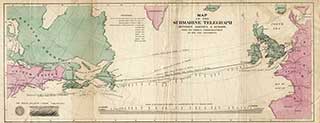
Fig. 2. Fold-Out Map of the Atlantic Cable Link, 1858 
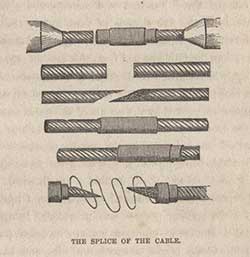
Fig. 7. Splicing Technique, 1858 
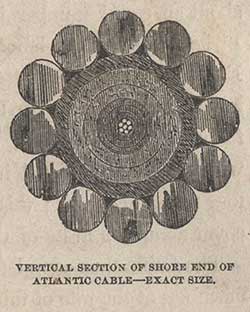
Fig. 8. Cross Section of the Shore End of
the Atlantic Cable, 1858 
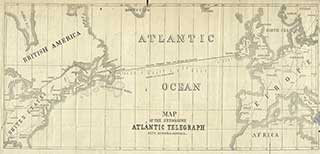
Fig. 10. Fold-Out Map of the Atlantic Cable Link, 1858 
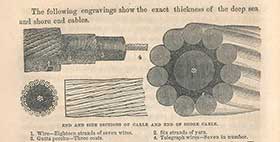
Fig. 13. Shore and Deep Sea Ends of
the Atlantic Cable, 1858 
I would like to begin a consideration of this topic with the two books on the Atlantic Cable that were published soon after the completion of the link. These works—which were aimed at the general public and provide interesting nineteenth-century examples of the “instant book”—are especially worthy of note in the context of this study since they both include multiple illustrations and encapsulate, to a certain extent, some of the answers to the question of how to illustrate the Atlantic Cable for a popular audience. The first one I will consider is The Story of the Telegraph, and A History of the Great Atlantic Cable by Charles F. Briggs and Augustus Maverick. Though the book is described on the title page as “Abundantly and Beautifully Illustrated,” that turns out to seem like a bit of false advertising since, in fact, only thirteen pages (including the frontispiece) of this 255-page book include illustrations, and some of those are rather small, taking up only a small part of the page. This fact may, in part, reflect the difficulty of putting out an illustrated book in such a short amount of time, but it also seems to highlight the difficulty some writers and publishers may have had in imagining just how to go about illustrating something as banal in appearance as a cable. In any case, the book’s frontispiece, an engraving by John A. O’Neill of a portrait of Cyrus W. Field, offers a first example of a displacement strategy as it focuses on the man behind the project, rather than the cable itself (fig. 1). And book’s title page, facing the frontispiece, gives a few additional hints as to what other sorts of displacement strategies would be used within that work and, indeed, elsewhere. The long subtitle, for example, lists some of the many topics related to the Atlantic Cable that would be described, and sometimes illustrated, in the book, and the quotation from Psalms at the top of the page (“Their line is gone out through all the earth, / And their words to the end of the world.” [chap. 19, ver. 4]) reflects the religious themes that appear in some of the illustrations in the popular press (though not in the illustrations of the book itself). Another example in Briggs and Maverick’s work of a displacement strategy is offered in the fold-out color map included with the work, which shows where the cable was laid (fig. 2). But in this case, the publisher also includes an image of a piece of the cable itself (both a cross section and side view) in the lower left-hand corner.
The illustrations within the book proper are relatively simplistic, and, once again, often focus on things other than the Atlantic Cable itself. The first ones are a set of three that show various telegraphic apparatuses (fig. 3  ). But cables do finally make their first appearance on pages 32 and 33, though, at this point, as part of a build-up to the Atlantic Cable itself. The examples on these pages, in fact, are from a land telegraph and a cable used for river crossings (fig. 4
). But cables do finally make their first appearance on pages 32 and 33, though, at this point, as part of a build-up to the Atlantic Cable itself. The examples on these pages, in fact, are from a land telegraph and a cable used for river crossings (fig. 4  ). The next step in the progression includes representations of two submarine cables, the one used for the Dover-Calais connection (1850) and the one used for the link between Holyhead, Wales, and Howth, Ireland (1852) (fig. 5
). The next step in the progression includes representations of two submarine cables, the one used for the Dover-Calais connection (1850) and the one used for the link between Holyhead, Wales, and Howth, Ireland (1852) (fig. 5  ). Finally, the suspense having gone on long enough, the reader is treated to images of a cross section, profile view and cutaway sectional view of the Atlantic Cable itself on pages 62 and 63 (fig. 6
). Finally, the suspense having gone on long enough, the reader is treated to images of a cross section, profile view and cutaway sectional view of the Atlantic Cable itself on pages 62 and 63 (fig. 6  ). These are followed by an illustration of the splicing technique used to join the various separate lengths of the Atlantic Cable together (fig. 7) and an image of a cross section of the shore end of the cable (which was thicker than the rest of the cable since it needed to withstand the stress caused by the movement of waves and tides) (fig. 8). And those two illustrations are the last ones in the book. But if there was a difficulty in illustrating something like the Atlantic Cable, one question that arises is whether an illustration of something actually has to be an image. A “Table of Submarine Cables,” included in the Appendix of The Story of the Telegraph, and A History of the Great Atlantic Cable, can be seen, for example, as illustrating the significance of this technological exploit merely through a list of names, dates and lengths in miles of all the submarine cables laid up until that time (fig. 9
). These are followed by an illustration of the splicing technique used to join the various separate lengths of the Atlantic Cable together (fig. 7) and an image of a cross section of the shore end of the cable (which was thicker than the rest of the cable since it needed to withstand the stress caused by the movement of waves and tides) (fig. 8). And those two illustrations are the last ones in the book. But if there was a difficulty in illustrating something like the Atlantic Cable, one question that arises is whether an illustration of something actually has to be an image. A “Table of Submarine Cables,” included in the Appendix of The Story of the Telegraph, and A History of the Great Atlantic Cable, can be seen, for example, as illustrating the significance of this technological exploit merely through a list of names, dates and lengths in miles of all the submarine cables laid up until that time (fig. 9  ). The last entry on the list, for the Atlantic Cable, with its number of miles (1,950) far outstripping all the others, subtly but eloquently illustrates the fact that the Atlantic Cable was in a class by itself.
). The last entry on the list, for the Atlantic Cable, with its number of miles (1,950) far outstripping all the others, subtly but eloquently illustrates the fact that the Atlantic Cable was in a class by itself.
The second “instant book” on the topic was The Laying of the Telegraphic Cable by John Mullaly, who billed himself on the title page as the “Historian of the Enterprise.” Mullaly, in fact, was on board the American ship Niagara, one of the two vessels used in laying the cable, and was a special correspondent for the New York Herald. The book was printed on a lower quality paper than the work by Briggs and Maverick and was sold bound in paper covers, which no doubt reflects the attempt to get it on sale as quickly as possible and for the relatively cheap price of fifty cents. Mullaly’s book includes some of the same kinds of illustrations as Briggs and Maverick’s, but it also goes much further in finding alternative, and sometimes more attractive, ways of illustrating the cable project, as did the newspapers and magazines of the time. I’ll first take a brief look at some of the similarities between the two “instant books” and then shift my focus to thematic considerations of Atlantic Cable illustrations that will include both The Laying of the Telegraphic Cable and periodicals. One of the similarities between the two books is the inclusion of a map of the Atlantic Cable span (fig. 10). Once again, this approach proved a relatively dramatic way of displaying the grandeur of the project, here without any attempt to include an illustration of the cable itself. Mullaly’s work also includes illustrations of telegraphic apparatuses and the machinery used in laying the cable (figs 11 & 12  ), highlighting, as had Briggs and Maverick, all of the somewhat complicated technology that had helped lead to making the Atlantic Cable a possibility, and then a reality. And then, of course, The Laying of the Telegraphic Cable also includes illustrations of the Atlantic Cable itself (fig. 13).
), highlighting, as had Briggs and Maverick, all of the somewhat complicated technology that had helped lead to making the Atlantic Cable a possibility, and then a reality. And then, of course, The Laying of the Telegraphic Cable also includes illustrations of the Atlantic Cable itself (fig. 13).
While on the topic of illustrations of the cable itself, I’d like to shift away from print for a moment, to take a brief look at one unique angle on the question of illustrating the cable that was implicitly offered by Tiffany’s & Co., the famed New York jeweler, which decided to cash in on public interest in the project by offering not some sort of deluxe image of the cable, but instead the “real thing,” as it were. In fact, Tiffany’s sold souvenir pieces of the actual cable (or rather four-inch segments of what was left over after the laying of the cable was complete) for fifty cents (the same price as Mullaly’s book), which were wrapped with a brass band inscribed: “ATLANTIC TELEGRAPH CABLE / GUARANTEED BY TIFFANY & CO. / BROADWAY • NEW YORK • 1858” and accompanied by a printed certificate signed by Cyrus W. Field (figs 14 & 15  ). Both texts (on the band and on the certificate) serve to authenticate this “piece of history.” Thus continuing in the vein of focusing on the cable itself—it’s the least one could say in this case—this example of what amounts to a literal synecdoche raises the question, at least potentially, as to whether something can be an illustration of itself.
). Both texts (on the band and on the certificate) serve to authenticate this “piece of history.” Thus continuing in the vein of focusing on the cable itself—it’s the least one could say in this case—this example of what amounts to a literal synecdoche raises the question, at least potentially, as to whether something can be an illustration of itself.


